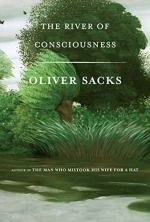|
This section contains 941 words (approx. 3 pages at 400 words per page) |

|
Summary
In this essay, Sacks questions how we perceive and understand time. Is it a continuous river or is it "more comparable to a succession of discrete moments, like beads on a string?" (161). Some scholars, like David Hume, "favored the idea of discrete moments," while others, like William James, "stressed that to its possessor consciousness seems to be always continuous" (161). Reflecting on these various theories, Sacks writes about how, before c.1830, we had no way "of making representations or images that had movement" (162). But with the invention of zoetropes and film camera, we can now use them as analogies for how the brain may or may not perceive and understand "the streamings and veering of consciousness" (163). Sacks asks if the past scholars who advocated a continuous stream of consciousness were right in thinking of consciousness in the same way as the continuous...
(read more from the "The River of Consciousness" Summary)
|
This section contains 941 words (approx. 3 pages at 400 words per page) |

|




